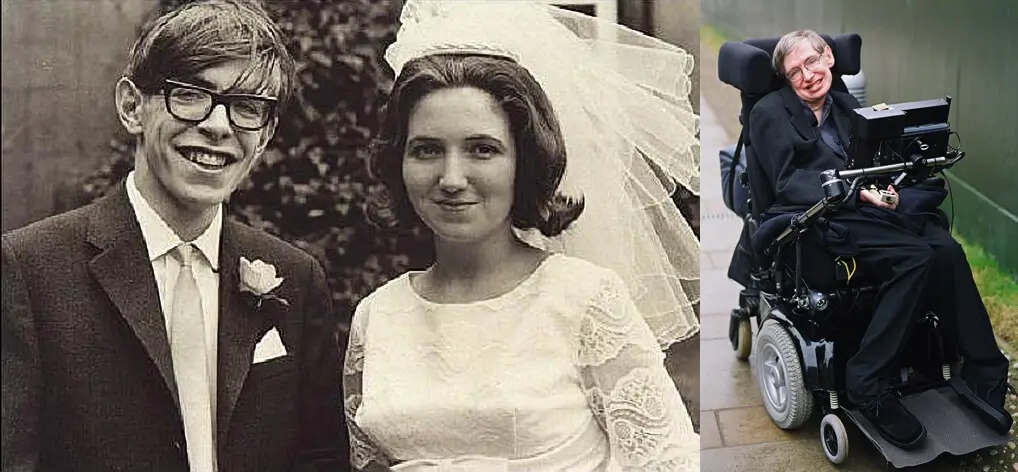Amyotrophic Lateral Sclerosis- Cyanobacteria algal blooms and dietary BMAA exposure
Abundance of nutrients created by runoff leads to excessive algal blooms. Algae excrete potent neurotoxins responsible for Amyotrophic Lateral Sclerosis (ALS).
Milos Pokimica
Written By: Milos Pokimica
Medically Reviewed by: Dr. Xiùying Wáng, M.D.
Updated May 7, 2023Amyotrophic Lateral Sclerosis (ALS, Lou Gehrig’s Disease) is one of the worst diseases you can have. Currently, there is no cure for it or any treatment.
Synthetic fertilizers create many problems. Fertilizers leach into streams, rivers, and lakes and disrupt the balance of aquatic ecosystems. This is creating an excess of nutrients, including nitrogen and phosphorus, in the water. This is food for the sea plants as much as it is food for land-grown crops. An abundance of nutrients created by runoff leads to excessive algal blooms. Excessive algal blooms then deplete the water of oxygen creating oceanic dead zones. Then when these algae start to decompose water quality problems emerge and the result is dead fish and other aquatic organisms. This process is called eutrophication.
One of the most significant dead zones worldwide can be found in the Gulf of Mexico, beginning at the Mississippi River delta.
This one thing should be enough reason to stop eating anything from the entire ocean at present time.
Just this form of imbalance in nature in the form of algae bloom can kill you. I am not kidding. What you do not understand is that these algae are not just some see vegetables that overgrow in seawater from fertilizers runoff and then die off. Some of them or let’s say most of them are fine and safe and won’t do long-term damage except the dead zones, but some of them are not safe because they create and excrete some of the most potent neurotoxins known to man.
When they start to overgrow because of all of the nitrogen runoff from the land they bloom and excrete enormous amounts of these neurotoxins into the water. These toxins that are chemically stable do not degrade but start to bioaccumulate like anything else. These toxins do damage to any exposure. If the exposure level is low, they will just worsen overall brain degradation and contribute to brain shrinkage with aging but if the toxins accumulate over the acceptable threshold Amyotrophic Lateral Sclerosis (ALS, Lou Gehrig’s Disease) will appear.
Stephen Hawking is an example of this. Hawking had a form of amyotrophic lateral sclerosis (ALS). Amyotrophic lateral sclerosis (ALS) is known commonly as Lou Gehrig’s disease. Amyotrophic lateral sclerosis (ALS) is a motor neuron degradation disease that in time completely paralyzes the patient eventually leading to respiratory failure. It just attacks motor neurons, so the patient’s mental capabilities remain intact, and in most cases, death comes after three years when they can no longer breathe on their own. There is no cure for it. Amyotrophic lateral sclerosis (ALS) strikes previously healthy people seemingly at random. Amyotrophic lateral sclerosis (ALS) is a progressive disease. That means that it can only go worse over time and usually kills in 2-5 years after the first signs of disease. About 10% of people with ALS survive at least ten years. Stephen Hawking was the longest-living individual in history with amyotrophic Lateral Sclerosis (ALS, Lou Gehrig’s Disease).
When the ice bucket challenge went viral, many people heard about this disease, and it became a form of social media awareness campaign that turned into a national phenomenon. Now it is nice to be there for people in need, but that will just pump our own image of self-worth. It would not help to prevent or lower the rate of the disease. Real awareness is something completely different. If people wanted to make a difference and raise awareness, they should do green algae water bucket challenge instead of an ice bucket one. Amyotrophic lateral sclerosis (ALS) is more common than recognized. We have 1 in 400 risks of getting it, and that is at a similar rate level of multiple sclerosis. Let us do some real awareness.

In 1944 U.S. forces had recaptured Guam from the Japanese. Initially, the United States occupied Guam from the Chamorro people on June 21, 1898. And currently, it is under the territory of the U.S. It is a small island in the middle of the Pacific Ocean with a big military base. After the war a navy neurologist noticed that local Chamorro people have a high rate of the very deadly form of the strange neurodegenerative disease with symptoms of dementia, shaking, paralysis, and death. In some settlements in Guam 1 in 3 people died. The illness was named amyotrophic lateral sclerosis-parkinsonism/dementia complex (ALS-PDC), known locally as lytico-bodig. They did not know what it is so they just described it as amyotrophy (atrophy of the muscles), lateral (from Latin lateralis, meaning to the side) and sclerosis (Greek σκληρός hard) is the stiffening of a structure. The rate of ALS in Guam was 50–100 times the incidence of ALS worldwide. After the systematic exclusion and statistical analysis, it was found that specific seeds of the cycad Cycas micronesica tree in the diet of the local population were the main trigger of the disease. Biochemical analysis associated neurotoxic non-protein amino acid, beta-methylamino-L-alanine (BMAA), as a primary cause of the illness.
Cycad trees were suspected because of the use of seed flour in cooking coupled with reposts of livestock ataxia after eating from it. And indeed BMAA neurotoxin was found in it. The discovery was just a part of research on the disease known as lathyrism. Lathyrism is mostly present in India, China, and the Middle East. It has very similar symptoms like progressive paralysis of the legs. Studies later linked lathyrism to the consumption of certain species of legumes that contained the compound ß-N-oxalylamino-L-alanine (BOAA). The lathyrism was the reason why the researchers tested cycad seeds for BOAA first. When the seed showed no concentrations of BOAA very similar substance had been found with a methyl group instead of an oxalyl group—BMAA. So it is chemically very similar to a neurotoxin that just has a methyl group instead. Subsequent studies on rats and monkeys showed the same result in both cases. BMAA is toxic to neurons. However, there was one big difference. Dietary exposure caused immediate symptoms in rats whereas ALS-PDC developed years or even decades after the initial exposure. One other problem was the dose.
In the 1980s neurotoxicologist, Peter Spencer did a study and reported the results of paralysis in macaques fed BMAA. However, again the dose used was much higher than the dose that people suffering from amyotrophic lateral sclerosis (ALS) were exposed to by cycad flour. People had to eat kilograms of it to ingest a comparable dose. Analysis of BMAA concentrations in cycad seeds by various research groups has highlighted that the toxin was present in the seed at low concentrations. Subsequent investigations confirmed that most of the neurotoxins, around 85 percent were removed from cycad flour during processing. There was a calculation that people would have to eat thousands of kilograms of the stuff every day to get to toxic levels of exposure. In the end, the entire theory was abandoned.
Then in the late 1990s, famed neurologist Oliver Sacks (the one who wrote Awakenings which was adapted into an Academy Award-nominated film in 1990, starring Robin Williams and Robert De Niro) and his colleague Alan Cox made some discoveries and resurrected the BMAA theory. The local Chamorro people by now with knowledge from the research that had been done started to use some tactics as a precaution. They made tortillas from cycad seed flour. However, before they use the seeds, they washed them repeatedly to remove toxins and then gave the water to the chickens to drink. If their chickens remained alive after drinking the wash water, the people deemed the seeds safe to grind and eat. However, they also ate other wild animals that they hunted and some of them also feed on cycad seeds as well. For example, for fruit bats and feral pigs, the common food was cycad seeds. Oliver Sacks got the idea that it is not the seed that is problematic but the animals that people consume because it is just another case of biomagnification.
One of the typical local meals was Mariana flying foxes simmered in coconut cream and eaten whole with skin, bones, brains, and everything. Sacks and Cox in 2002 theorized that these animals that feed on the seeds in time create a neurotoxic reservoir of BMAA in their brain tissues. Because their brains were also eaten on a regular basis by the Chamorros, chronic dietary exposure had created the reservoir of BMAA in their own brain leading after a lag time, to a neuronal meltdown and development of amyotrophic lateral sclerosis (ALS). The consumption of Guamanian flying foxes which fed on the cycads was core to the Chamorro tradition. Also, statistical correlation showed that the decline of the flying fox population due to excessive hunting correlated with the drop in the number of cases of ALS/PDC presented in Guam. Cox analyzed the skin of preserved museum flying fox specimens (collected five decades previously) and found BMAA concentrations to be extremely high.
The lag time is one of the things that made these diseases hard to track. With leg time people tend to expose themself to the toxin completely without noticing anything wrong and when the pool of this toxin accumulates and the disease shows the first symptoms, it is already too late. The final closure of the topic was autopsies on the brains of Chamorros that died from ALS/PDC that found high levels of BMAA (1). 13 Canadian subjects had no detectable levels of BMAA. They were just individuals who died of causes unrelated to neurodegeneration. However, when BMAA was measured, it was also found in the brains of all of the Canadian patients with Alzheimer’s disease. However, wait just a second. These people were in Canada not in Guam. They did not eat flying foxes or Cycat tree seeds.
The real story here is that BMAA neurotoxin was not produced by the tree either. It was produced by Nostoc cyanobacteria, root symbionts of the cycad trees. Bacteria that live in the roots of the tree made the toxin. When the toxin gets absorbed by the roots it will be passed to the seeds, then to the bats that feed on them and then to the people.
The implication of this scientific discovery is terrifying. If cyanobacteria produce these neurotoxins, it will have massive ramifications for public health on a global scale. Cyanobacteria are ubiquitous and can be found in almost every aquatic or terrestrial habitat. They are literary everywhere from damp soil, freshwater, oceans, hot springs, bare rock and soil, rocks in the desert, and even Antarctic rocks. The name cyanobacteria come from the color of the bacteria (Greek: κυανός. Kyanós meaning blue). You know these bacteria as blue-green algae, that bloom from fertilizer runoff.
Cox found the presence of BMAA in most of the variety of cyanobacterial strains tested from all over the globe. It is not just the Guam Nostoc strain, it is every strain of this blue-green algae or to be precise 95% of all strains produce BMAA. Because of enormous algae blooms the level of BMAA today needs to be measured and studied. There were studies that measured the levels of BMAA in some of the higher trophic organisms. High concentrations were detected in various species of fish, mussels, oysters, and plankton thus indicating that the global human population is at high risk of bioaccumulation of this neurotoxic compound through the food chain everywhere in the world.
To this day there is no scientific consensus that BMAA exposure through the consumption of contaminated food could play a causal role in various neurodegenerative pathological conditions. In some studies, depending on the methods they did not find BMAA in Alzheimer’s brain tissue in others they do. Measured levels of BMAA in the brain might not mean causality; proximity is not causality. Some of the most compelling evidence was presented at the International ALS/Motor Neuron Disease (MND) Symposium in 2011. There was a research that showed that BMAA is not found in the brain tissue in higher concentrations because it will get incorporated directly into the nerve cell itself. It was shown that BMAA gets incorporated into nerve cell proteins causing the protein misfolding and ultimately cell death. Dunlop and Rodgers reported that the tRNA synthetase enzyme for the amino acid serine mistakenly picks up BMAA thinking that it is serene and then incorporates it into proteins in vitro. This substance is nothing less than pure mutagen. Consequent autofluorescence indicated that the proteins misfolded, and the cells died. What we can say for sure is that BMAA might not cause Alzheimer’s or Parkinson’s disease just by itself, but it does worsen the condition, and it does cause amyotrophic lateral sclerosis (ALS). Now to fully understand the story of BMAA since many people around the world may be exposed to it we might also ask the question why did some individuals get neurodegenerative effects from it, and some others did not?
Cox suspected that vulnerability may reflect a gene-environment interaction. If this single environmental toxin plays a role in different diseases such as Parkinson’s disease, ALS, Alzheimer’s disease, and maybe some other diseases as well, this could represent a gene-environment interaction based on individual genetic resilience. However, no one has yet investigated a genetic basis for BMAA vulnerability. It is the same story all over again. Humans did get exposed to this naturally occurring toxin during normal evolution. What is making this disease increase in prevalence is algae blooms caused by unnatural high levels of nutrient runoff from fertilizer fields, animal waste, sewage, and soil erosion in water that eventually raise the levels of blue-green algae to unnaturally high levels. Some people have better genetics dealing with this some might be sensitive. Also, it depends on how much seafood you eat. The cause of this disease is not hereditary. It is a maladaptation to our current environment. This toxin was found in freshwater fish, saltwater fish, and shellfish. Some of the fish have levels of BMAA comparable to those found in fruit bats in Guam. I cannot give estimates here because BMAA concentration varies from the place of sampling. Some species of crab, for example, might be high or low on the toxicity level depending are their algae bloom in the water or not. The more bloom, the more toxin. However, toxins spread everywhere eventually. This could explain the ALS clustering in populations who live around lakes for example. A number of ALS cases have been diagnosed among residents of Enfield, New Hampshire, a town encompassing a lake with a history of cyanobacteria and algal blooms. There were six cases of ALS diagnosed from 1975 to 1983 in long-term residents of Two Rivers, a small Wisconsin community. The probability that this occurred due to chance was less than 0.05%.
Cyanobacteria species depending on the type have the ability to produce a different array of metabolites, not just BMAA that are also neurotoxins, hepatotoxins, or dermatoxins. BMAA does not have to kill us to be bad. It can cause neurologic damage and increase the overall toxic load on our bodies and have synergistic effects with mercury and lead and all other neurotoxins to enhance cognitive decline.
In the end, it might not be the only thing that can trigger amyotrophic lateral sclerosis (ALS). BOAA triggers lathyrism for example. It is the same type of neuron death as in amyotrophic lateral sclerosis (ALS). American veterans have more instances of amyotrophic lateral sclerosis (ALS) for an unknown reason. The situation in Guam in the last decade or so is promising. Their levels of amyotrophic lateral sclerosis (ALS) are significantly lower than in the past, but now they know what the root cause of this neurologic disease epidemic they had to face was. And without the island of Guam, the rest of the world will still eat seafood thinking that it is health-promoting and safe. The problem with nature is that it is hard to science every molecule that exists. There are thousands of natural pollutants like BMAA in nature. Some of them can even be sexually transmitted like ciguatera toxin that again is produced by algae and built up in the food chain, and again it is thermally and chemically stable. It causes nightmares literally with pain and fatigue and a burning cold sensation. The reversal of temperature sensation, hot feels like cold, and cold feels like hot. It can last for years and in low doses just causes fatigue. The story of a romantic dinner with red snapper in a Greek marinade with wine. Dream tropical paradise vacation turning into cold, painful sex with nightmares. Some of the chronic fatigue syndromes cases are actually ciguatera fish poisoning. In some people, it can cause recurring symptoms during periods of stress, weight loss, exercise, or excessive alcohol use even after 25 years of initial exposure.
Because of all of the pollution, most fish today have infections both from bacteria and parasites. Never eat raw anything from the water ever in your entire life. Forget about sushi. Shifts in the balance of nature have consequences. Everything that is unnatural, and when I say that, I mean everything that our hominin ancestors did not do, or have been exposed to is disease-promoting with the potential for exposure to an unknown amount of unidentified toxins. If there were clean and pristine oceans eating predatory fish is still a bad idea, and eating a lot of fish is unnatural. Fish is inflammation-promoting meat even without all of the pollution.
References:
Passages selected from a book: Pokimica, Milos. Go Vegan? Review of Science Part 2. Kindle ed., Amazon, 2018.
- Murch, Susan J et al. “A mechanism for slow release of biomagnified cyanobacterial neurotoxins and neurodegenerative disease in Guam.” Proceedings of the National Academy of Sciences of the United States of America vol. 101,33 (2004): 12228-31. doi:10.1073/pnas.0404926101
- Bradley, Walter G, and Deborah C Mash. “Beyond Guam: the cyanobacteria/BMAA hypothesis of the cause of ALS and other neurodegenerative diseases.” Amyotrophic lateral sclerosis : official publication of the World Federation of Neurology Research Group on Motor Neuron Diseases vol. 10 Suppl 2 (2009): 7-20. doi:10.3109/17482960903286009
- Chiu, Alexander S et al. “Does α-amino-β-methylaminopropionic acid (BMAA) play a role in neurodegeneration?.” International journal of environmental research and public health vol. 8,9 (2011): 3728-46. doi:10.3390/ijerph8093728
- Brand, Larry E et al. “Cyanobacterial Blooms and the Occurrence of the neurotoxin beta-N-methylamino-L-alanine (BMAA) in South Florida Aquatic Food Webs.” Harmful algae vol. 9,6 (2010): 620-635. doi:10.1016/j.hal.2010.05.002
Related Posts
Do you have any questions about nutrition and health?
I would love to hear from you and answer them in my next post. I appreciate your input and opinion and I look forward to hearing from you soon. I also invite you to follow us on Facebook, Instagram, and Pinterest for more diet, nutrition, and health content. You can leave a comment there and connect with other health enthusiasts, share your tips and experiences, and get support and encouragement from our team and community.
I hope that this post was informative and enjoyable for you and that you are prepared to apply the insights you learned. If you found this post helpful, please share it with your friends and family who might also benefit from it. You never know who might need some guidance and support on their health journey.
– You Might Also Like –

Learn About Nutrition
Milos Pokimica is a doctor of natural medicine, clinical nutritionist, medical health and nutrition writer, and nutritional science advisor. Author of the book series Go Vegan? Review of Science, he also operates the natural health website GoVeganWay.com
Medical Disclaimer
GoVeganWay.com brings you reviews of the latest nutrition and health-related research. The information provided represents the personal opinion of the author and is not intended nor implied to be a substitute for professional medical advice, diagnosis, or treatment. The information provided is for informational purposes only and is not intended to serve as a substitute for the consultation, diagnosis, and/or medical treatment of a qualified physician or healthcare provider.NEVER DISREGARD PROFESSIONAL MEDICAL ADVICE OR DELAY SEEKING MEDICAL TREATMENT BECAUSE OF SOMETHING YOU HAVE READ ON OR ACCESSED THROUGH GoVeganWay.com
NEVER APPLY ANY LIFESTYLE CHANGES OR ANY CHANGES AT ALL AS A CONSEQUENCE OF SOMETHING YOU HAVE READ IN GoVeganWay.com BEFORE CONSULTING LICENCED MEDICAL PRACTITIONER.
In the event of a medical emergency, call a doctor or 911 immediately. GoVeganWay.com does not recommend or endorse any specific groups, organizations, tests, physicians, products, procedures, opinions, or other information that may be mentioned inside.
Editor Picks –
Milos Pokimica is a health and nutrition writer and nutritional science advisor. Author of the book series Go Vegan? Review of Science, he also operates the natural health website GoVeganWay.com
Latest Articles –
Top Health News — ScienceDaily
- This cancer-fighting molecule took 50 years to buildon December 22, 2025
MIT scientists have achieved the first-ever lab synthesis of verticillin A, a complex fungal compound discovered in 1970. Its delicate structure stalled chemists for decades, despite differing from related molecules by only two atoms. With the synthesis finally complete, researchers created new variants that showed strong activity against a rare pediatric brain cancer. The breakthrough could unlock an entire class of previously unreachable cancer-fighting molecules.
- A new drug could stop Alzheimer’s before memory loss beginson December 22, 2025
New research suggests Alzheimer’s may start far earlier than previously thought, driven by a hidden toxic protein in the brain. Scientists found that an experimental drug, NU-9, blocks this early damage in mice and reduces inflammation linked to disease progression. The treatment was given before symptoms appeared, targeting the disease at its earliest stage. Researchers say this approach could reshape how Alzheimer’s is prevented and treated.
- Why one long walk may be better than many short oneson December 22, 2025
How you walk may matter just as much as how much you walk. A large UK study tracking more than 33,000 low-activity adults found that people who grouped their daily steps into longer, uninterrupted walks had dramatically lower risks of early death and heart disease than those who moved in short, scattered bursts.
- Parkinson’s breakthrough changes what we know about dopamineon December 22, 2025
A new study shows dopamine isn’t the brain’s movement “gas pedal” after all. Instead of setting speed or strength, it quietly enables movement in the background, much like oil in an engine. When scientists manipulated dopamine during movement, nothing changed—but restoring baseline dopamine levels made a big difference. The finding could reshape how Parkinson’s disease is treated.
- A traditional Brazilian plant shows unexpected strength against arthritison December 22, 2025
A Brazilian study has confirmed that Joseph’s Coat, a plant used for generations in folk medicine, can significantly reduce inflammation and arthritis symptoms in lab tests. Researchers observed less swelling, healthier joints, and signs of tissue protection. Just as important, the extract showed a promising safety profile at tested doses. The discovery could pave the way for new plant-based anti-inflammatory treatments.
- Study links full-fat cheese to lower dementia riskon December 22, 2025
Eating full-fat cheese and cream may be associated with a lower risk of dementia, according to a large study that tracked people for more than 25 years. Those who consumed higher amounts of these foods developed dementia less often than those who ate little or none. Interestingly, low-fat dairy products did not show the same pattern. Researchers caution that the findings show an association, not cause and effect.
- Science says we’ve been nurturing “gifted” kids all wrongon December 21, 2025
A major international review has upended long-held ideas about how top performers are made. By analyzing nearly 35,000 elite achievers across science, music, chess, and sports, researchers found that early stars rarely become adult superstars. Most world-class performers developed slowly and explored multiple fields before specializing. The message is clear: talent grows through variety, not narrow focus.
PubMed, #vegan-diet –
- Comparing diet-related attitudes, perceptions, and behaviors of vegan and omnivorous adults: results from a cross-sectional survey study in Germanyon December 22, 2025
CONCLUSION: The findings are consistent with and build on existing research on cognitive and behavioral patterns related to a vegan diet, while at the same time yielding some additional insights. In particular, the results on significant differences in the risk-benefit perception of a vegan diet, as well as on motivations and influences regarding the decision to follow a vegan diet provide an important basis for the development of public health interventions and a foundation for further […]
- Assessment of vitamin A, vitamin B2, vitamin B12, vitamin K, folate, and choline status following 4 months of multinutrient supplementation in healthy vegans: a randomised,…on December 19, 2025
CONCLUSION: A multinutrient supplement containing 82 µg of vitamin B(12) per day significantly positively affected vitamin B(12) blood biomarkers in healthy vegans.
- Exploring the synergistic potential of pH and ultrasonication on the functional properties of pea and lentil protein isolates and its formulation in food producton December 15, 2025
The substitution of meat proteins with plant-based proteins from various sources is often motivated by nutritional considerations. However, the inherent limited solubility of plant proteins, which results in suboptimal techno-functional properties, remains a persistent challenge in food formulation. The purpose of this study was to utilize unique properties of pea (Pisum sativum L.) and lentil (Lens culinaris) through ultrasonication and pH variation in order to develop a stable and […]
- Healthful and Unhealthful Plant-Based Diets and Their Association with Cardiometabolic Targets in Women Diagnosed with Breast Cancer: A Cross-Sectional Analysis of a Lifestyle Trialon December 11, 2025
CONCLUSIONS: Maintaining cardiometabolic risk factors within normal ranges is clinically relevant in BCS, and this may be more likely when a plant-based diet is consumed, especially if low in unhealthy plant foods.
- Functional and Nutritional Properties of Lion’s Mane Mushrooms in Oat-Based Desserts for Dysphagia and Healthy Ageingon December 11, 2025
Hericium erinaceus (Lion’s Mane mushroom) is a medicinal species recognised for its neuroprotective and antioxidant properties. This study investigated its potential as a functional ingredient in oat milk-based desserts formulated for individuals with dysphagia. Freeze-dried Lion’s Mane powder (LMP), containing high-quality protein (~16%, amino acid score 88%), dietary fibre (~31%), and phenolic compounds (72.15 mg GAE/g), was incorporated at varying levels using gelatin or iota-carrageenan […]
Random Posts –
Featured Posts –
Latest from PubMed, #plant-based diet –
- Associations Between Healthy and Plant-Based Dietary Patterns and Cognitive Reserve: A Cross-Sectional Analysis of the 1946 British Birth Cohortby Kelly C Cara on December 23, 2025
CONCLUSIONS: CR was positively associated with healthy dietary patterns and inversely associated with unhealthful plant-based dietary patterns. Diet uniquely explained variations in CR and should be considered among influential lifestyle factors in future research. Longitudinal analyses are needed to confirm these findings.
- Dietary quercetagetin attenuates H2O2-induced oxidative damage and preserves meat quality in broilers by modulating redox status and Nrf2/ferroptosis signaling pathwayby Wenyue Hu on December 22, 2025
In modern poultry production, oxidative stress has emerged as a pivotal factor compromising the health status and overall performance of broiler. The aim of this study was to investigate the effects of dietary quercetagetin (QG) supplementation on hydrogen peroxide (H(2)O(2))-induced oxidative damage in breast muscle of broilers, focusing on growth performance, meat quality, and antioxidant function, and elucidating the underlying mechanisms. Two hundred and forty one-day-old Cobb broilers […]
- Effects of dietary selenium supplementation on physiological parameters, tissue fatty acid composition, and fatty acid-metabolism relative gene expression of grouper (Epinephelus coioides) fed high…by Yen-Chun Lee on December 22, 2025
The present study evaluated the effects of dietary selenium (Se) supplementation on growth performance, physiological responses, tissue fatty acid profiles, and the expression of genes related to fatty acid metabolism in juvenile grouper (Epinephelus coioides). A control diet based on soy protein concentrate, replacing 40% of the fish meal protein, was supplemented with graded levels of Se at 0, 0.3, 0.6, and 1.0 mg Se kg^(-1). A fish meal-based reference diet was also included for […]
- Unravelling the interaction between feeding regimens and milking time in Parmigiano Reggiano PDO milk: an integrated metabolomics and ion mobility lipidomics approachby Pier Paolo Becchi on December 22, 2025
In this study, an integrated approach based on UHPLC-HRMS metabolomics and IM-HRMS lipidomics has been carried out to unravel the interaction between feeding and milking time in the overall chemical profile of Parmigiano Reggiano (PR) milk. Specifically, ANOVA multiblock OPLS (AMOPLS) modelling revealed the complementarity of the assays in combining the effect of these two critical parameters. In particular, metabolomics highlighted the presence of plant-derived compounds (mainly terpenoids […]
- Comparing diet-related attitudes, perceptions, and behaviors of vegan and omnivorous adults: results from a cross-sectional survey study in Germanyby Dan Borzekowski on December 22, 2025
CONCLUSION: The findings are consistent with and build on existing research on cognitive and behavioral patterns related to a vegan diet, while at the same time yielding some additional insights. In particular, the results on significant differences in the risk-benefit perception of a vegan diet, as well as on motivations and influences regarding the decision to follow a vegan diet provide an important basis for the development of public health interventions and a foundation for further […]
- The effect of dietary interventions on peripheral markers of inflammation among people with multiple sclerosis: A systematic review and meta-analysis of randomized controlled trialsby Wade R Pingel on December 21, 2025
CONCLUSIONS: Several dietary interventions may reduce systemic inflammation in PwMS, with greater effects in longer-duration interventions. Calorie-restricted diets did not significantly alter adipokines. Given the limited number and heterogeneity of studies, larger and longer RCTs using comparable dietary interventions are needed to confirm these findings.

























